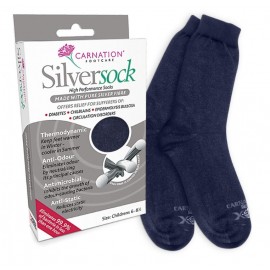Key Features of Diabetic Footwear: Ensuring Comfort and Preventing Complications
Introduction
For individuals with diabetes, proper footwear is crucial in preventing foot complications and maintaining overall foot health. Diabetic footwear is specifically designed to cater to the unique needs of those living with diabetes, offering features that promote comfort, support, and protection. This article will outline the key features of diabetic footwear and discuss their importance in preventing foot-related issues in people with diabetes.
Non-binding and spacious design
Diabetic footwear is designed to avoid placing excessive pressure on the foot, which can cause skin breakdown and contribute to the development of ulcers. The shoes should have a non-binding design with a spacious toe box to accommodate any foot deformities such as bunions, hammertoes, or swollen feet.
Seamless interior
Seams and stitching inside a shoe can cause friction against the skin, leading to irritation or blisters. Diabetic footwear should feature a seamless interior to minimize potential sources of pressure or rubbing.
Breathable materials
Footwear for individuals with diabetes should be made of breathable materials like leather, canvas, or mesh. This helps to keep the feet dry and reduces the risk of fungal infections or skin breakdown. Moisture-wicking materials are also beneficial in maintaining a healthy foot environment.
Cushioned insoles
Adequate cushioning and shock absorption are essential features in diabetic footwear. Cushioned insoles can help distribute pressure evenly across the foot, reducing the risk of pressure sores and ulcers. Many diabetic shoes come with removable insoles, allowing for customization with orthotic inserts if necessary.
Firm heel counter
A firm heel counter provides support and stability to the rear of the foot, helping to maintain proper foot alignment and minimize the risk of injury. This feature is particularly important for individuals with neuropathy who may have difficulty maintaining balance.
Adjustable closures
Diabetic footwear should have adjustable closures, such as laces, Velcro, or buckles, to ensure a secure and customized fit. Adjustable closures accommodate fluctuations in foot size due to swelling or other factors, ensuring that the shoes remain comfortable throughout the day.
Slip-resistant soles
Individuals with diabetes may have reduced sensation in their feet, increasing the risk of slips and falls. Diabetic footwear should feature slip-resistant soles to provide adequate traction and minimize the risk of injury.
Proper arch support
Proper arch support in diabetic footwear helps to distribute weight evenly across the foot, reducing the risk of developing pressure points that can lead to ulcers. Arch support also contributes to overall foot stability and alignment.
Conclusion
Diabetic footwear plays a vital role in preventing foot complications and promoting overall foot health in individuals with diabetes. By selecting shoes with features such as non-binding design, seamless interior, breathable materials, cushioned insoles, firm heel counter, adjustable closures, slip-resistant soles, and proper arch support, individuals with diabetes can maintain comfort while reducing the risk of foot-related issues. It is crucial to consult with a healthcare professional or a certified pedorthist to ensure that the chosen diabetic footwear meets the specific needs of each individual.





Leave your comment
Note: HTML is not translated!